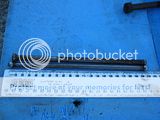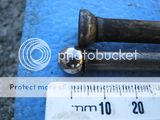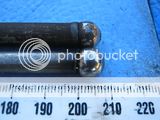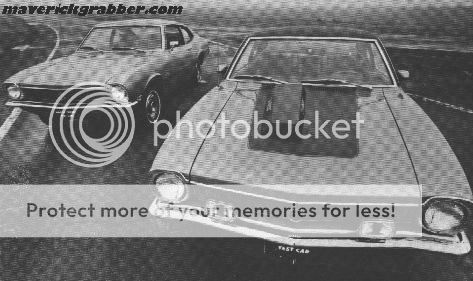Interceptor":1iyjzx1h said:
......
I do want to order the Adjustable 1.6 Roller-Tipped Rocker Arms + 8.230"pushrods but that has nothing to do with you lift right?
Not sure if you can help me pick a carb out with this info?
The stock camshaft lift is increased from 370 thou (9.4 mm) to almost 400 thou (about 10 mm) via those roller rockers. They are a good choice, and will improve your flow to 180 cfm from about 170cfm. They are a very good choice.
Don't use a 600 cfm 4-bbl, because of your stock transmission and cam. The 465 and 390 cfm versions are the same physical size, but have a smaller set of venturis and will suit your car better.
Google searched "Classic in-lines 600 cfm carb for my CI head"
From that, I got
http://www.classicinlines.com/CarbChoice.asp
Recommendation for your engine, 285 to 310 cfm.
So anything 2-bbl or 4-bbl from:
1.08 Venturi (287 CFM) ex 289 Windsor, 302 Windsor (27 mm venturis)
1.06 Venturi DGAS 38 (300 CFM) ex Euro Granada or Capri 2.8/3.0 (27 mm venturis)
1.14 Venturi (300 CFM) ex 289 Windsor, 312 Y Block, 332, 352 FE (29 mm venturis)
1.21 Venturi (351 cfm) isn't too big
The best Motorcraft carb is the modern 2150, around in 1.08 venturi, 287 CFM and 1.21 venturi, 351 CFM cfm forms. The last 2-bbl 157 HP 5.0 82 Mustang had one, its a 1973-1982 351 cu in (5.8 L) Windsor, 1977-1982 351 cu in (5.8 L) 351M, 1977-1979 400 cu in (6.6 L) carb. The little 287 cfm item is found on everything from the 115 hp 255 (4.2s) to most 137 to 140 hp 302 (5.0)'s. Great carbs.
From personal experience, the vacuum secondary #8007 Holley 390 cfm 4-bbl works well, idles better than any 2-bbl. Its a standard 3.5 liter DAF/Rover/LandRover replacement carb for engines in the 125 to 245 hp bracket. Four 27 mm venturis, idles on two, then stages two more 27 mm barrels. It's a little hard to get, but works very well.
You have to make a few little changes to the fuel delivery line or reposition the engine a little to fit it in the engine bay, but it will fit. It looes exactly like the 465, 470, 600 cfm Holleys.
Clearance Issues For 4-bbls:
See
http://www.classicinlines.com/AlumInstalls.asp
Our long time member
wcol has done the conversion.
He settled on a 4-bbl Edelbrock, ( AVS thunder series 4 bbl carburetor is 500cfm ) but his car is a 5-speed T5 manual with cam. He has, like others, looked at different 4-bbls to fit the engine bay best. Holley 465 cfm 4-bbls are much harder to fit than Holley or Autolite 2-bbls. The are also smaller float bowl conversions if something on a 4-bbl Holley hits the brace bars.
This is an Edelbrock AVS thunder series 4 bbl carburetor 500cfm 1406

This is a 4-bbl Holley 465 CFM mounted properly, showing some space limits


Modern low slung hoods are problems when you start adding V8 style carburation to an I6. For a while, it looked like people would be happy with special hood sccops, like this one for the 1970 Maverick.
The public never liked those solutions, so the old time drag racer solved all the carb space issues from 1973 on wards to the early 8o's with special intake adaptors.
The American Impco company, with Ak Miller, made Propane conversions, so if you have space limitations, the parts used for old V8 propane cars 9 times out of 10 will solve any carb space problems.
For air cleaner, use the Impco CA 300A long snorkel which you find on many Dutch Propane Gas converted V8's. It allows you to fit everything under the hood. See


















